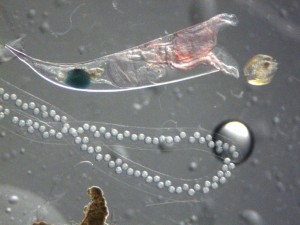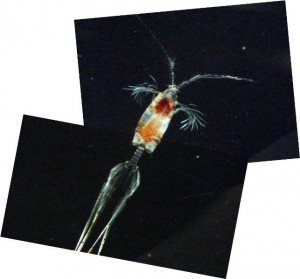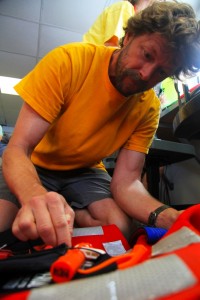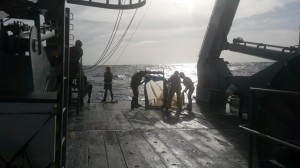Ever since we left Barbados, we have been watching flying fish jump out of the way of our bow wake. A bow wake is the wave that the ship makes in front of it as it pushes water out of the way. Flying fish are small, about five to fourteen inches, give or take a few inches. They are blue and silvery. And they do really fly over the waves! They do this to avoid being eaten by predators. When they sense our ship approaching, they think that a larger hungry creature is honing in for a snack. They have evolved large pectoral fins (the fins on either side of a fish, near the head and gills) that serve as wings. They leap out of the water, and glide over the sea surface in the air, fleeing from a would-be killer. It is not easy to stay alive as a fish or a plankter (singular of plankton) living in the ocean. Your predators can come from any direction, left, right, up and down. In the open ocean, there is usually no place to hide. For this reason, animals have evolved with specialized methods for avoiding being the next meal. Flying fish are a perfect example of a special adaptation – a fish that can fly! Other examples of adaptations for survival are camouflage, and schooling behavior.
Flying fish are not just cool; they are also tasty! They are the national dish of Barbados, where you can find many a vendor selling flying fish sandwiches.
Here is a poem I wrote about flying fish:
Flying fish, what a delectable dish,
but also pretty cool flying in a school.
These little guys really do fly,
bouncing from trough to crest.
When the bow wave bulges from ship or shark,
the flying fish heads away from the dark.
Out of the blue and into the sky,
away from sharp jaws glittering fish fly.
Most fish jump, then hop and then,
Plop! Back into the water and
met with inevitable slaughter.
Not the flying fish, no!
Up and away they go.
shooting toward the sun.
Away from danger into a world
all the more stranger.
An ironic twist for our favorite fish:
they cannot breathe air as one might wish,
if one were hurdling over the waves.
And instead of gliding to safety,
may end up on deck as a dinner quite tasty.
- Karen Stamieszkin




















